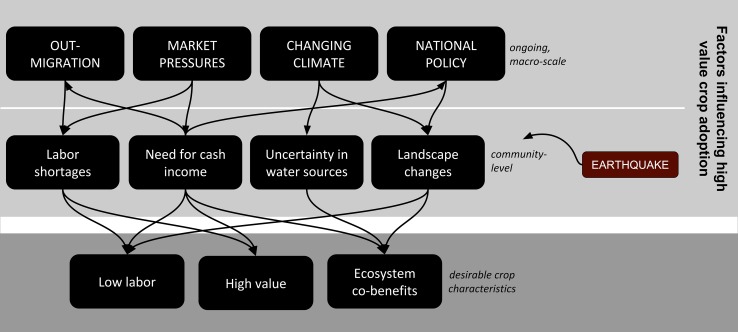Fig. 3.
Analytical framework of ongoing and post-disaster factors impacting high-value crop adoption in the mid-hills of Nepal. Arrows indicate relationships between patterns that emerged from our empirical findings. These affect ongoing changes and interact with community-level impacts from the earthquake to motivate particular crop decisions. For example, decreased access to farm labor due to out-migration converged with loss of critical livestock support and manual labor for hire, leading to desire for low labor crops; whereas damage to fields and uncertainty in water sources limited farmer capacity to plant traditional crops, like rice, which require stable terraces and reliable irrigation. The earthquake further undermined the structural integrity of many terraced slopes and fields, resulting in increased landslide risk, leading to a need for crops that stabilize or grow on marginal lands, like cardamom

